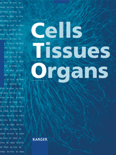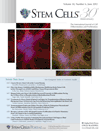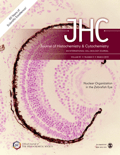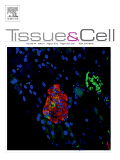
CELLS TISSUES ORGANS
Scope & Guideline
Pioneering Research in Biological Structures and Functions.
Introduction
Aims and Scopes
- Cellular and Molecular Biology:
Research on cellular mechanisms, including cell signaling, differentiation, and interactions within tissues and organs. - Tissue Engineering and Regenerative Medicine:
Studies focusing on the development of biomaterials, scaffolds, and engineered tissues for therapeutic applications. - Mechanobiology:
Exploration of how mechanical forces influence cell behavior, tissue development, and organ function. - Pathophysiology:
Investigations into the cellular and molecular basis of diseases, including cancer, neurodegeneration, and inflammatory disorders. - Organ Models and Organ-on-a-Chip Technologies:
Development and application of in vitro organ models to study organ-specific functions and disease mechanisms.
Trending and Emerging
- 3D Bioprinting and Biomaterials:
Research focused on the development and application of 3D bioprinting technologies and novel biomaterials for creating complex tissue structures is gaining momentum. - Cellular Plasticity and Regeneration:
There is increasing exploration of cellular plasticity, particularly in stem cells and their potential for regeneration and repair in various tissues. - Computational Biology and Systems Approaches:
Emerging studies applying computational models and systems biology approaches to understand complex biological interactions and predict cellular behaviors. - Microphysiological Systems and Organ-on-a-Chip:
The use of microphysiological systems and organ-on-a-chip technologies is on the rise, providing new avenues for drug testing and disease modeling. - Extracellular Vesicles and Cell Communication:
Research into the role of extracellular vesicles in cell communication and their therapeutic potential is becoming an increasingly prominent focus.
Declining or Waning
- Traditional Histology Techniques:
Research relying solely on conventional histological methods may be waning as newer molecular and imaging techniques provide more detailed insights into tissue structures and functions. - In Vivo Animal Models:
The reliance on traditional animal models may be decreasing in favor of advanced in vitro systems, such as organoids and microphysiological systems, which offer more controlled environments for studying human biology. - Static Tissue Culture Systems:
Interest in static culture systems is declining as dynamic and bioreactor systems gain traction for better mimicking physiological conditions and enhancing tissue functionality.
Similar Journals

Journal of Hard Tissue Biology
Unveiling the Secrets of Hard Tissue StructuresJournal of Hard Tissue Biology, published by JOURNAL HARD TISSUE BIOLOGY, is a pivotal resource for researchers and practitioners engaged in the multifaceted fields of biochemistry, biomaterials, cell biology, dentistry, and orthopedics. With an ISSN of 1341-7649 and a publication history spanning from 2003 to 2024, this journal aims to disseminate innovative findings and review articles that contribute to the understanding of hard tissue structures and their applications in medicine. Despite its current Q4 ranking across several categories, including Biochemistry and Oral Medicine, the journal serves as a critical platform for emerging research, appealing to those dedicated to advancing the science of hard tissues. While it operates under a subscription model, the articles published here are essential for anyone seeking comprehensive insights into the biological, mechanical, and clinical aspects of hard tissues. The journal's commitment to excellence and its ongoing contributions make it an indispensable tool for students, researchers, and professionals aiming to enhance their understanding of hard tissue biology.

Biomaterials Research
Transforming research into real-world applications.Biomaterials Research, published by the American Association for the Advancement of Science, is a prominent open access journal established in 2014, dedicated to advancing the field of biomaterials. Based in the United Kingdom, this journal has swiftly become an essential platform for researchers and practitioners, offering groundbreaking insights in biomaterials, biomedical engineering, ceramics and composites, and miscellaneous medical fields. With its impressive Q1 ranking across multiple relevant categories in 2023 and its strong Scopus rankings, including a remarkable 90th percentile in the medicine category, Biomaterials Research showcases high-quality, peer-reviewed research designed to address both practical and theoretical challenges in biomaterials science. As an open access journal, it promotes wider dissemination and accessibility of research findings, crucial for fostering innovation and collaboration within the scientific community. Researchers, professionals, and students alike are encouraged to contribute, read, and engage with the latest developments in this dynamic field.

ARTIFICIAL ORGANS
Fostering Collaboration in the Realm of Biomedical Advances.ARTIFICIAL ORGANS is a leading academic journal published by Wiley, focusing on the interdisciplinary fields of bioengineering, biomaterials, and biomedical engineering. Established in 1977 and continuing through 2024, this journal plays a pivotal role in advancing research related to artificial organs and their impact on healthcare innovations. With an impressive impact factor and notable Q2 rankings across multiple categories, including Medicine and Biomedical Engineering, ARTIFICIAL ORGANS caters to a global audience of researchers, professionals, and students devoted to the latest developments in organ replacement and regenerative medicine. Although not an open-access journal, it maintains a rich repository of essential research articles, reviews, and case studies that collectively enhance the scientific community's understanding of artificial organ technologies. By publishing high-quality, peer-reviewed content, ARTIFICIAL ORGANS remains a vital source for emerging knowledge and collaborations in the exciting field of artificial organ research.

CELL AND TISSUE RESEARCH
Empowering Scientists with Essential Knowledge in Cell and Tissue StudiesCELL AND TISSUE RESEARCH, published by Springer, is a premier journal dedicated to advancing the field of cell biology, histology, pathology, and forensic medicine. With a proud history dating back to its foundation in 1924 and continuing its legacy, this journal has established itself as a vital source for innovative research, facilitating the dissemination of significant findings that contribute to the understanding of cellular and tissue dynamics. Hailing from Germany, the journal exhibits an impressive standing in the academic community with a 2023 impact factor reflected in its category quartiles: Q2 in Cell Biology, Q1 in Histology, and Q1 in Pathology and Forensic Medicine. It ranks notably within multiple Scopus categories, including 32/208 in Pathology and Forensic Medicine and 13/62 in Histology, showcasing its high percentile rankings of 84th and 79th, respectively. Researchers, professionals, and students benefit from its extensive coverage and rigorous peer-review process that ensures the integrity and relevance of its published works, thus making it an essential resource in the scientific community. While it operates under a subscription model, its commitment to quality and impact makes it an indispensable journal for anyone engaged in cellular and tissue research.

STEM CELLS
Driving collaboration in cutting-edge biological research.STEM CELLS, published by Oxford University Press, is a leading academic journal dedicated to advancing the field of cell and developmental biology. With an impressive impact factor and ranking in the Q1 and Q2 quartiles across various disciplines, including Developmental Biology and Molecular Medicine, this journal serves as a critical platform for disseminating cutting-edge research findings from 1981 to the present. The journal's rigorous peer-review process ensures the highest quality of published content, making it an essential resource for researchers, healthcare professionals, and students interested in the latest breakthroughs in stem cell research and its applications. With a focus on innovative methodologies and holistic perspectives, STEM CELLS not only highlights significant discoveries but also fosters a collaborative exchange of ideas, driving forward the frontiers of science in regenerative medicine and developmental studies.

BIOCELL
Exploring the Depths of Biochemistry and GeneticsBIOCELL is a distinguished peer-reviewed journal dedicated to the field of Cell Biology, published by TECH SCIENCE PRESS. Since its inception in 1995, the journal has been at the forefront of disseminating innovative research, with converged publication years extending from 1995 to 2013 and from 2015 to 2024. Although it currently holds a Q4 ranking in the Cell Biology category according to the 2023 category quartiles, BIOCELL aims to foster advancements by providing a platform for researchers, professionals, and students to share their findings in biochemistry, genetics, and molecular biology. The journal is available in both print (ISSN: 0327-9545) and digital formats (E-ISSN: 1667-5746) and seeks to attract contributions that enhance scholarly dialogue and understandings of cellular mechanisms and innovations. With a commitment to quality research and critical discourse, BIOCELL plays an important role in nurturing the scientific community within Argentina and beyond, offering vital insights that contribute to the advancement of the life sciences.

TRENDS IN CELL BIOLOGY
Pioneering Insights into Cellular MechanismsTRENDS IN CELL BIOLOGY, published by CELL PRESS, is a premier journal in the field of cell biology, recognized for its high-impact contributions since its inception in 1991. As a distinguished member of the Q1 quartile within its category, the journal holds an impressive Scopus ranking of #8 out of 285, placing it in the 97th percentile of the field, which underscores its reputation for excellence. The journal serves as an essential resource for researchers, professionals, and students who are engaged with groundbreaking advancements in biochemistry, genetics, and molecular biology. Although it is not open access, it provides critical insights into the latest trends, reviews, and advancements in cell biology, making it a crucial tool for anyone committed to understanding the complexities of cellular systems. With a focus on innovative and transformative research, TRENDS IN CELL BIOLOGY continues to shape the discourse in cell biology and enhance the scientific community's knowledge.

JOURNAL OF HISTOCHEMISTRY & CYTOCHEMISTRY
Connecting Researchers with Cutting-Edge DiscoveriesWelcome to the JOURNAL OF HISTOCHEMISTRY & CYTOCHEMISTRY, a premier platform for the dissemination of cutting-edge research in the fields of anatomy and histology. Published by SAGE PUBLICATIONS LTD, this esteemed journal has been a cornerstone of academic inquiry since its inception in 1953 and continues to play a vital role in advancing our understanding of cellular structure and function. With an impressive Impact Factor reflected in its rank as Q1 in both Anatomy and Histology categories, the journal ranks #5 out of 48 in Medicine Anatomy and #17 out of 62 in Medicine Histology, making it an essential resource for researchers and professionals alike. The journal provides a rigorous peer-review process and encourages submissions that enhance the scientific community's knowledge. As a vital resource for students, professionals, and researchers focusing on histochemical methodologies, the JOURNAL OF HISTOCHEMISTRY & CYTOCHEMISTRY offers insights into the latest advancements and critical debates within this dynamic discipline.

Tissue Barriers
Unlocking the Secrets of Tissue DynamicsTissue Barriers is a pioneering journal published by Taylor & Francis Inc, specializing in the multifaceted field of tissue biology. With an Impact Factor that solidifies its stature within academia, it currently holds a Q2 ranking in Biochemistry and Cell Biology, and an esteemed Q1 ranking in Histology as per the 2023 Category Quartiles. This journal, with a history spanning from 2013 to 2024, plays a critical role in disseminating cutting-edge research that explores the intricate barriers of tissues, their functional implications in health and disease, and the molecular mechanisms behind these processes. With its notable Scopus Ranks placing it among the top journals in medicine and biochemistry, Tissue Barriers aims to foster interdisciplinary collaboration and attract submissions that contribute significantly to our understanding of tissue dynamics. This commitment to excellence in scholarly publishing makes it an essential resource for researchers, professionals, and students seeking the latest advancements in this vital area of study.

TISSUE & CELL
Connecting Research to Real-World ImpactTISSUE & CELL is a prominent academic journal, published by CHURCHILL LIVINGSTONE, that has been at the forefront of research in the fields of cell biology, developmental biology, and miscellaneous areas of medicine since its inception in 1969. With a strong focus on high-quality research, TISSUE & CELL has established itself within the academic community, holding a Q3 ranking in both Cell Biology and Developmental Biology, and a Q2 ranking in Medicine as of 2023. The journal aims to disseminate significant findings that contribute to the understanding of tissue structure and function, helping to bridge the gap between basic biological research and clinical applications. While it operates on a subscription basis and does not currently offer Open Access options, the journal remains a vital resource for researchers, professionals, and students interested in cutting-edge developments in the biological sciences. The journal's address is located in the scenic city of Edinburgh, further establishing its academic heritage in the United Kingdom.